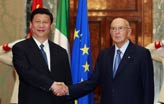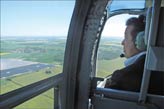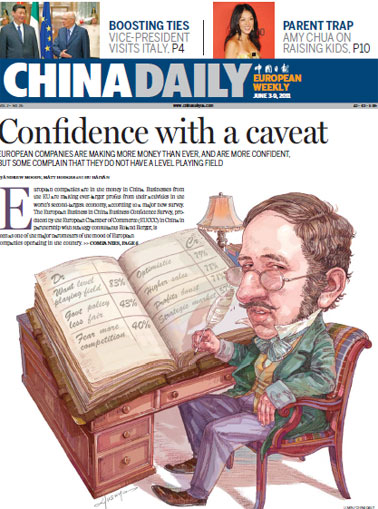Society
New middle class leads to rising tourism
Updated: 2011-06-05 08:06
By Jim Mannion (China Daily)
|
A group of tourists leaving the Wynn Resorts Ltd casino resort in Macau. International tourism may explode in the coming years because of rising demand from countries such as China, India and Brazil. Jerome Favre / Bloomberg |
LAS VEGAS - China, India and Brazil are poised to fuel an explosion in international tourism in the coming years, showering money and jobs on countries ready for it, and trouble for those that aren't, industry leaders say.
With an estimated two billion new middle-class consumers expected to come into the markets from those emerging powerhouses over the next two decades, the travel industry sees a potential gold rush ahead.
"The growth of Chinese outbound travel is moving at a huge pace - it's about a 20 percent increase every year. And the number of outbound Chinese travelers hit 58 million last year," said David Scowsill, CEO of the World Travel and Tourism Council, an industry promotion group.
"And if you look ahead, (with about) 1.6 billion coming out of China and India, that's a huge amount of people with money to burn," he told reporters.
The impact of that coming wave is a top topic at a three-day global travel and tourism summit that was held in Las Vegas last month, drawing CEOs from many of the world's largest travel companies, and top tourism officials.
Barriers to travel, technological innovation and change, body blows to tourism in quake-struck Japan and the turbulence in parts of Asia and Africa also are on the agenda.
The organizers said they wanted to get government officials and industry leaders to think about what the arrival of the Chinese, Brazilians, Indians and others from newly affluent countries will mean for their national economies and the international travel business.
"We'll ask the attendees whether they are ready to absorb that level of growth," said Scowsill.
"Are governments ready with infrastructure build? Are private investors ready to put the investment in, and, generally speaking, are we ready to absorb that level of growth?"
Roger Dow, of the US Travel Association (USTA), calls the conflict between the projected surge in demand and lagging infrastructure "a real chicken and egg".
"As we build this travel, which will happen, we'll also have to take a real hard look at our infrastructure, our next-generation systems for airports, and adding airport capacity," he said.
Countries that haven't caught up in time are likely to be cursed with fun-killing bottlenecks and overcrowding, as millions of new tourists pour through the global travel system.
Ironically, said Scowsill, it is "the developed market leaders that don't fully understand the impact of tourism. They kind of take it for granted in a way that we do not see in some of the developing world".
The United States, for instance, has seen little growth over the past decade in the number of long-haul travelers it receives, at a time when the rest of the world has seen an increase of about 40 percent.
Nevertheless, recently released US Commerce Department figures showed a strong rebound in the country's travel and tourism-related exports in 2010 to $134.4 billion, after a record $21 billion, or 15 percent, drop in 2009.
The biggest increase, 18 percent, came from the Asia-Pacific region. Visitors from China increased their tourism-related spending by 39 percent, Singapore rose 31 percent, and for South Korea the figure was 30.
In the view of the travel industry, the US numbers would be much higher were it not for a system for granting visas that is so gratingly slow that it is driving away visitors. After the September 11, 2001 attacks, the United States instituted requirements that every visa applicant must be interviewed in person by a consular level officer. "The end result is we have seen visa waiting times for interviews go up to 100, 120 days in Brazil and China," said Scowsill.
"In Brazil, there are only four places you can go for a visa interview. In China there are five. So the combination of the huge population, the huge demand, and the need for face-to-face interviews in very few places is what has created the problem," he said.
The USTA has also released a report calling for an overhaul of the system.
It proposed hiring 400 more consular interviewers, allowing interviews to be conducted by videoconference, and exploring visa waivers with countries such as Brazil.
Agence France-Presse
E-paper

Harbin-ger of change
Old industrial center looks to innovation to move up the value chain
Chemical attraction
The reel Mao
Improving app-iness
Specials

Vice-President visits Italy
The visit is expected to lend new impetus to Sino-Italian relations.

Birthday a new 'starting point'
China's national English language newspaper aims for a top-notch international all-media group.

Sky is the limit
Chinese tycoon conjures up green dreams in Europe with solar panels

